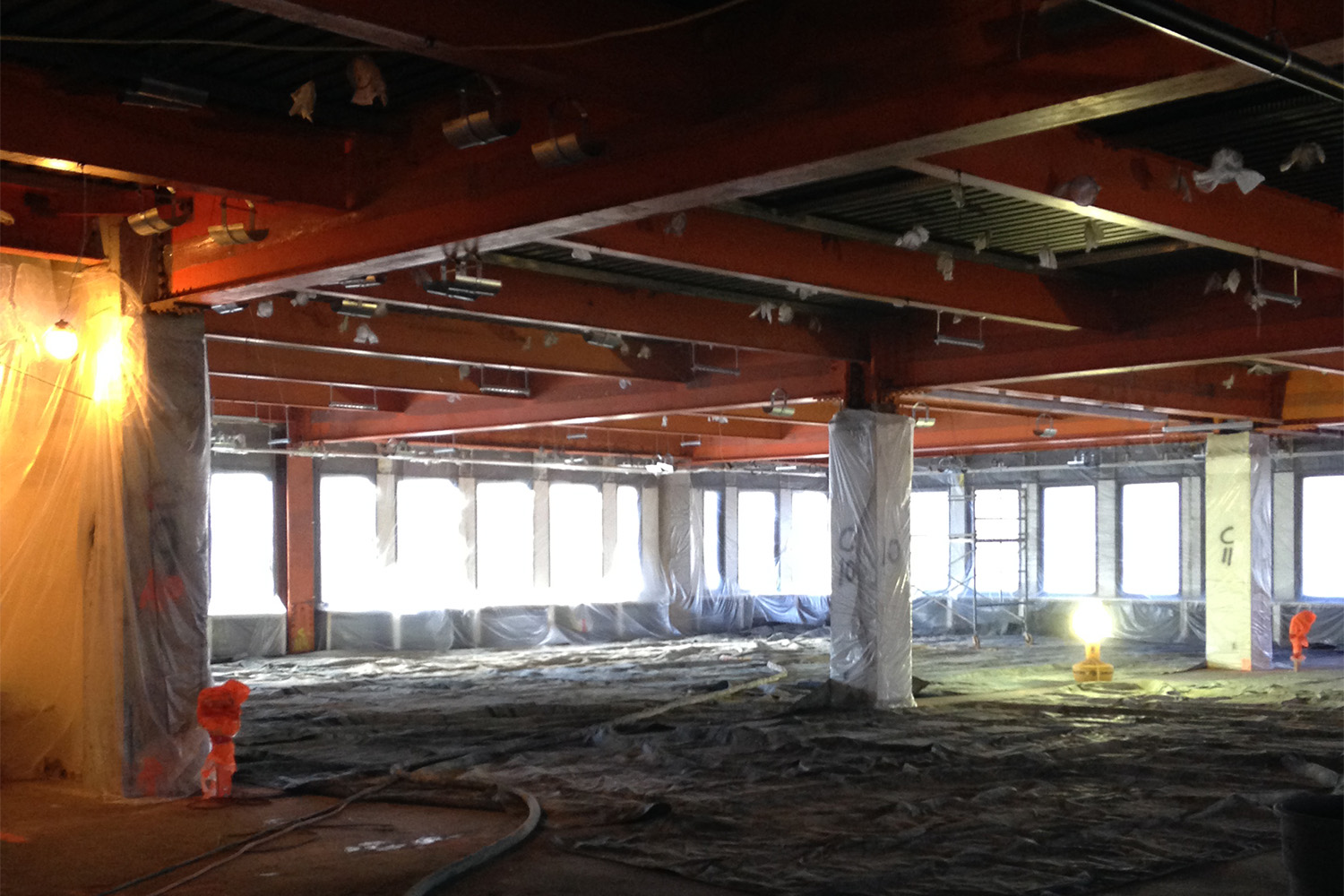Project Update: Peter W. Rodino Federal Building
Share

Project Updates delivered by two Tocci employees
Project Update: By Moises Berrun | Virtual Design & Construction Modeler
We’re in the thick of it here in Rodino with the second phase of the interior renovations. Construction on the 13th floor is in progress while preparations for 4th-floor demolition are underway. Ductwork for the western half of the 13th floor is nearing completion and the eastern half has been fabricated and will be installed soon. Wall framing for the western half of the floor is nearing completion. Sprinkler piping is being installed. Fan coil perimeter piping is nearing completion. The CMU wall of the mechanical room has been blocked and coordinated with duct penetrations. This is no small feat considering the density of ductwork in the adjacent corridor space and the spatial restrictions of the mechanical room. Modeling is a great asset in planning interior work.
While the interior renovations are underway, preparations for the exterior renovations are afoot. Construction of the new overclad facade system requires the demolition of significant existing exterior building elements. These elements include parapet demolition, partial roof demolition, partial facade demolition, mega-column enclosure demolition, 3rd-floor soffit demolition, and abatement. This demolition requires extensive planning of scaffolding and safety. The sequencing of demolition is complicated further with a fully-occupied building. That the building is occupied by government agencies that conduct day-to-day operations in fulfillment of their mission is not lost on the project team. The sequencing of the demolition work considers the impact on the comfort of the agencies within the building. This consideration is a supportive task and requires extensive communication with the agencies and people using the building daily. In that supportive role, the visualization provided by modeling is of great benefit in communicating and reinforcing the sequence of work.
FM BIM Update: By Kirsten Soderlund, LEED GA | Virtual Design & Construction Modeler
Working on the facility management component of the Rodino project has been quite the beast to wrangle and has revealed the exact reason why BIM for FM is so important: gathering all of the necessary information from drawings and submittals is a time-intensive task. Throughout the process, I’ve learned two important lessons, first, to begin with, the end in mind, and second, to think of your BIM as a tool for lifecycle (not just as a tool for design, construction, or facilities management) from the early stages in the project. Unfortunately, FM was tacked on after the project had already started, so the BIM doesn’t include many of the attributes required in the FM scope. Since the model wasn’t built to contain the information needed for FM, there has been a huge loss in tacit knowledge, so we have had to go back to the subcontractors and ask for schedules of equipment months after installation. This is the exact reason FM BIM is critical. Our experience with Rodino highlights the importance of using BIM as a hub of project knowledge from the beginning to mitigate the loss of important information.